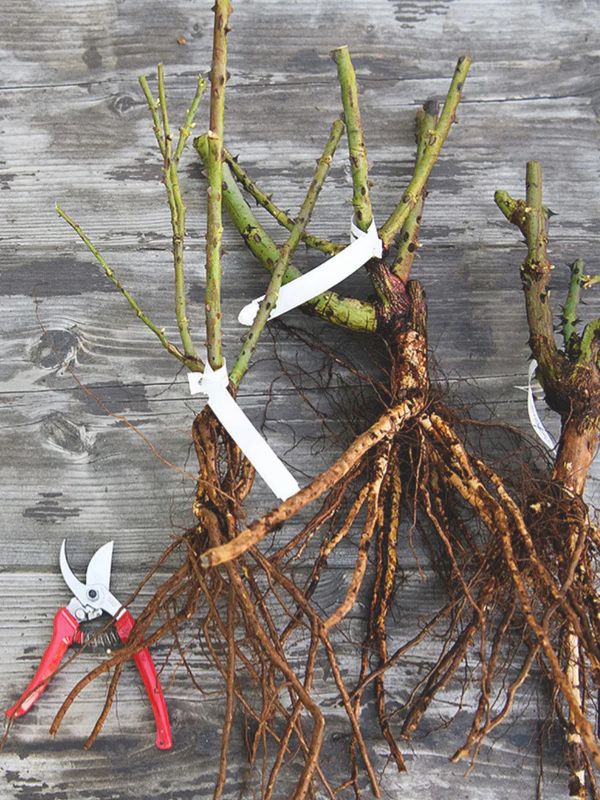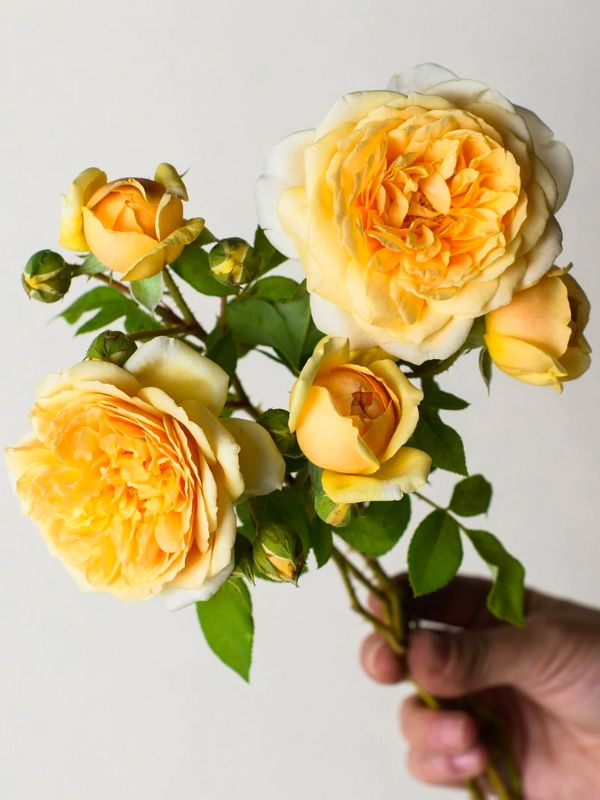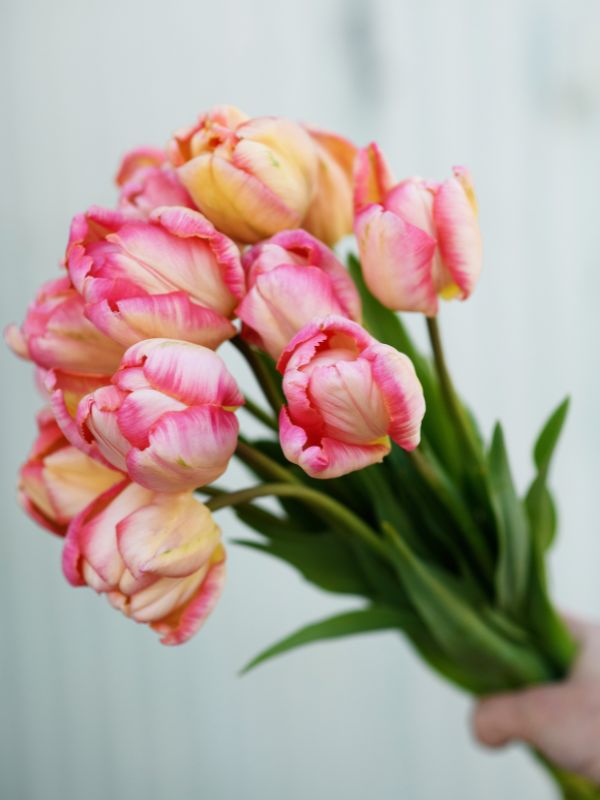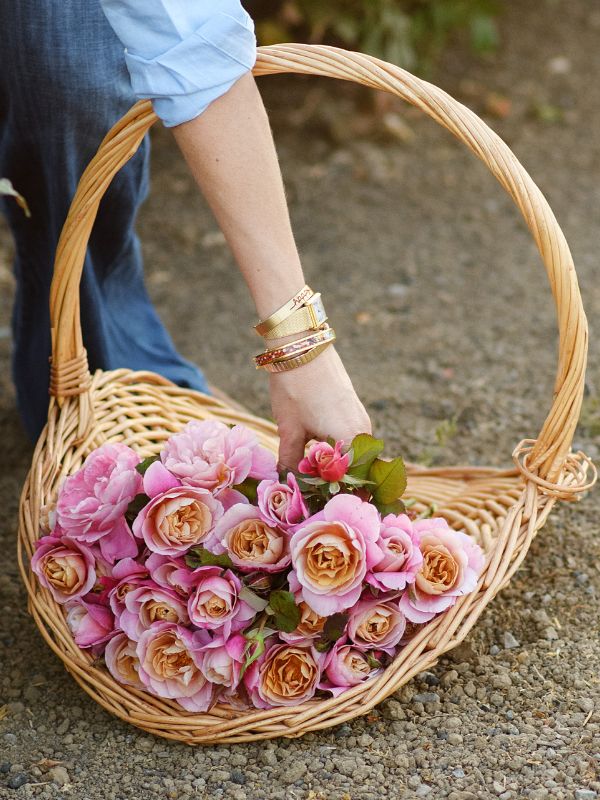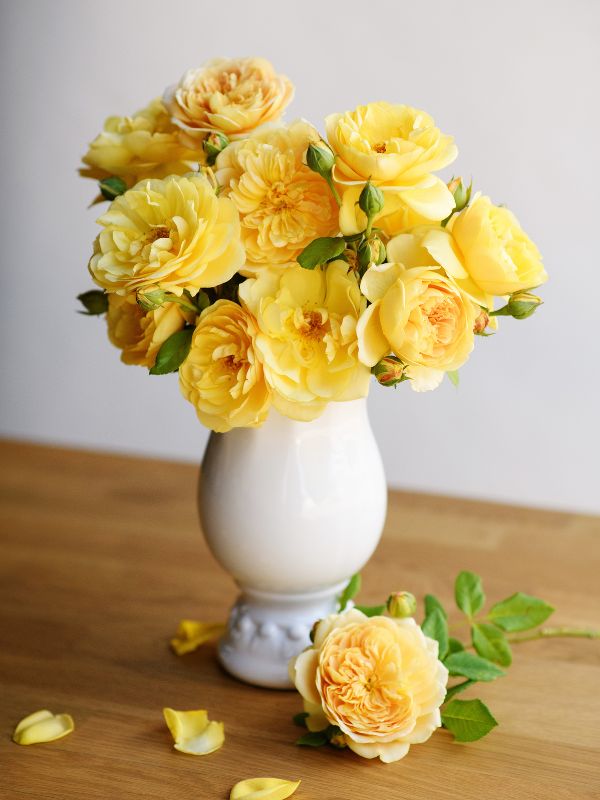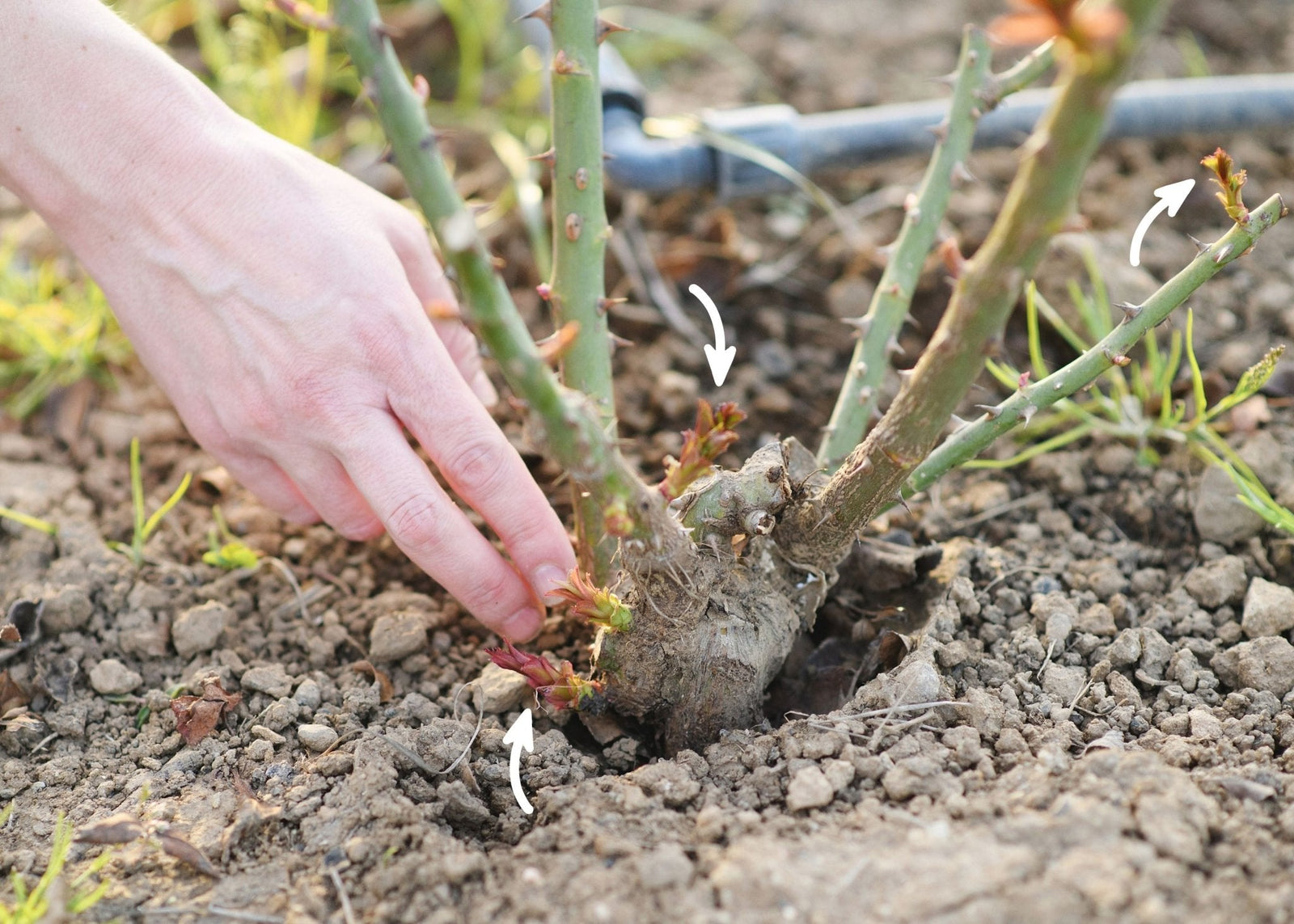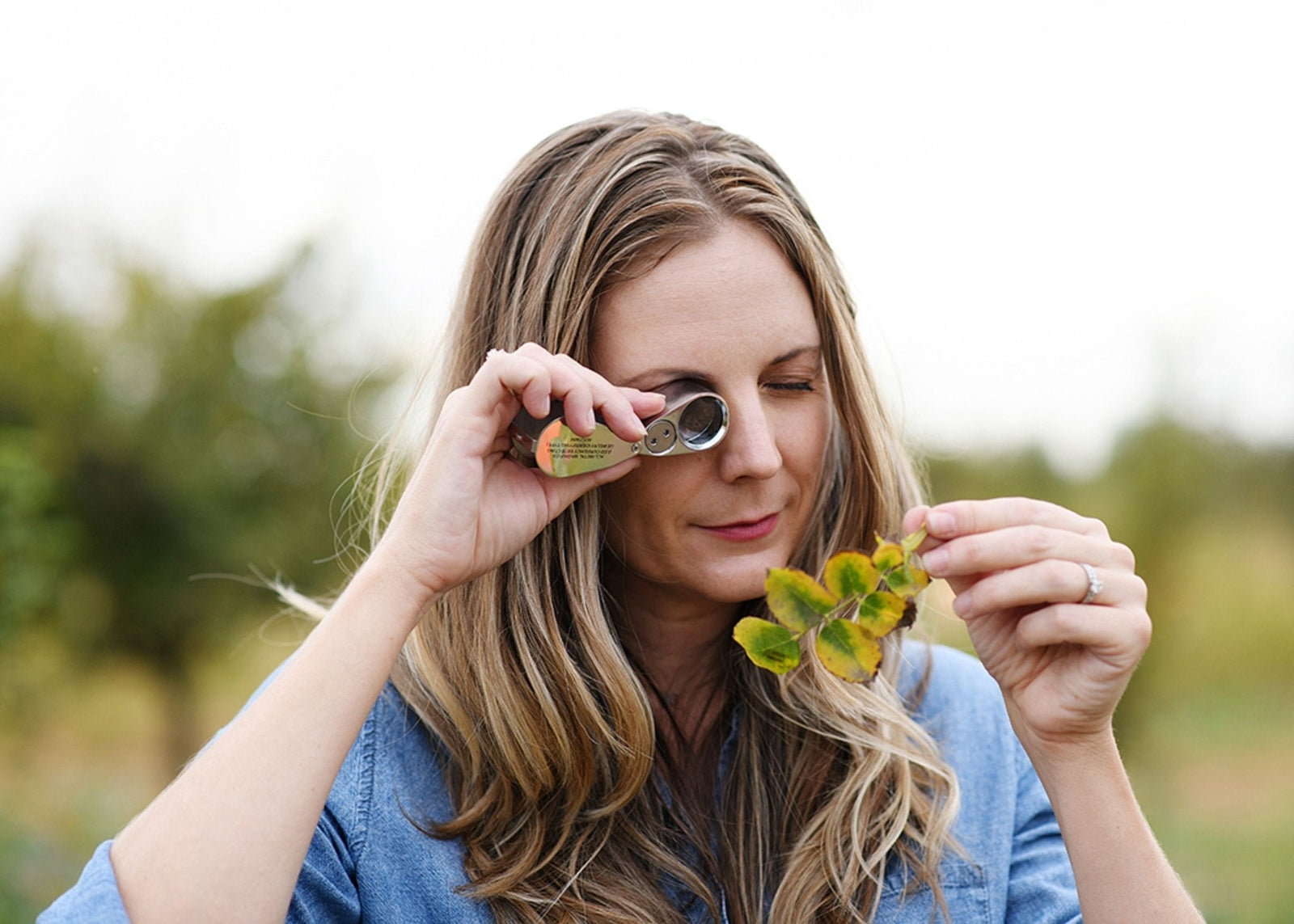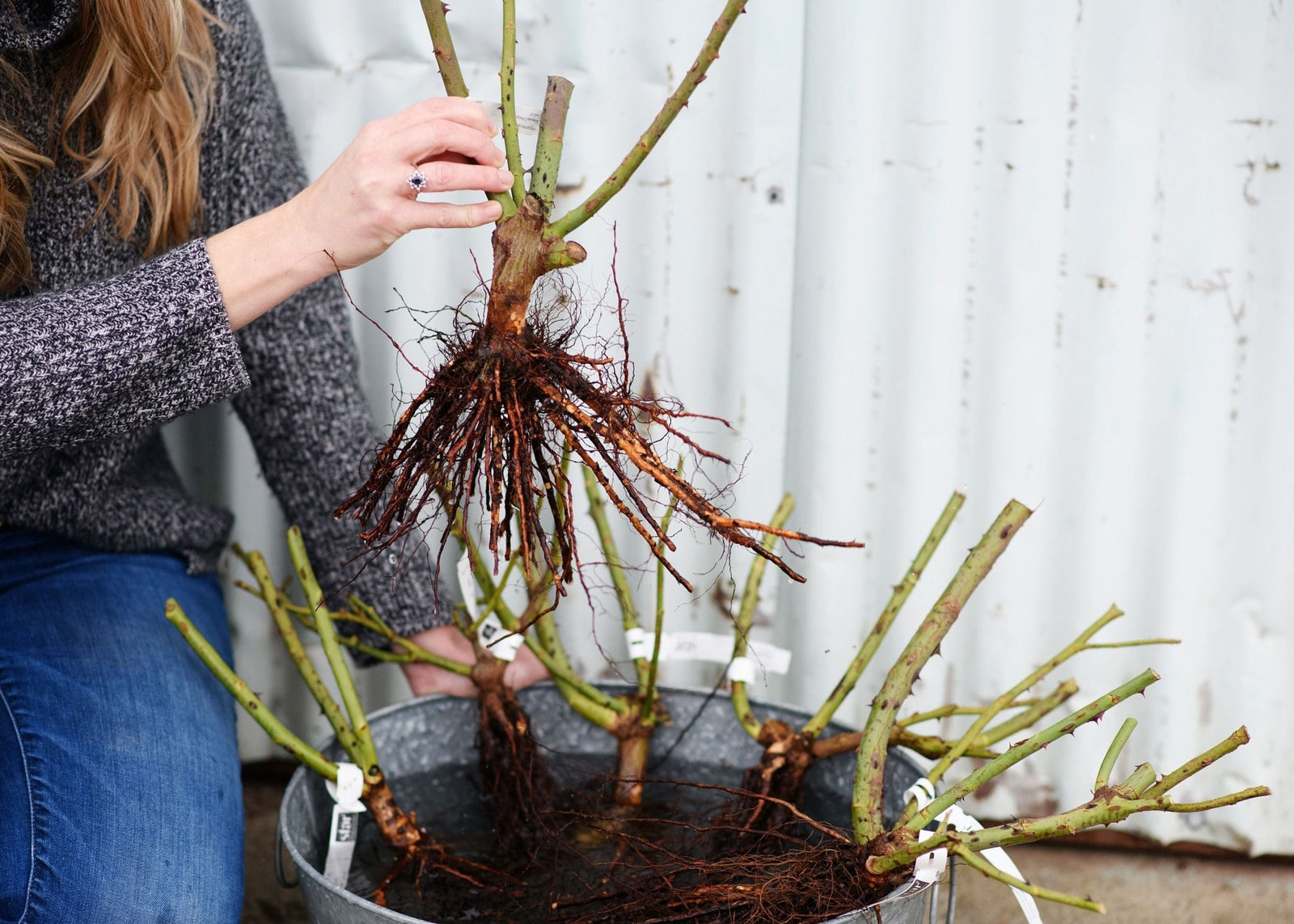I'm giving you my tips for what "to do" and "not to do" in the fall so your roses will be ready for the winter season. Thoughtful care of garden roses in the fall will help you prepare for a beautiful spring filled with healthy blooms.

IS FALL A GOOD TIME TO ADD NEW ROSE PLANTS?
Yes, Fall is a great time to add rose plants depending on your growing zone. In zones 8-10 it’s perfect weather for planting all kinds of perennials especially garden roses. Aim to get fall potted roses in the ground 6 weeks before your first expected frost so they have time to root. Don’t apply any fertilizer at planting. You don’t want them pumping out blooms, you want them to root and them get ready for a short Winter’s nap.
If you don’t live in a zone with warmer Fall weather (zones-7-4), use this time to prepare a new rose bed by marking off the area, removing weeds and then adding compost or organic material. You can use any compost whether it be manure, bags from your local nursery store or shredded leaves. This process will give the soil a chance to fully come to life over the winter months. By Spring, your soil will be rich and ready for new roses!

CAN ROSE BUSHES BE PRUNED IN THE FALL?
YES, however you’ll want to avoid major pruning cuts on roses in the fall. As with deadheading, pruning any type of rose plant spurs more growth. So if you live in an area where the weather gets colder, your roses will begin to move their energy reserves into their roots (dormancy) which will help them survive the winter. If you aggressively prune throughout fall, this process to move into dormancy will stop, your rose will put on growth and your rose plants may not fare well as well in the colder months with tender new shoots.
What you CAN do in the fall to help winterize your roses and help them prepare for adverse winter weather conditions, like wind and rain, is to shape prune. Shape pruning is just as the name suggests, prune any long or tall canes to a nice shape to reduce the height of your rose to prevent cane breakage. In high winds long canes create a top heavy rose that can act as a sail in and lift the rose out of the ground or canes and whip and beat together causing wounds that make it easy for diseases and insects to enter the plant.
Not all roses will require shape pruning, but a good trim is especially helpful for hybrid teas that may have reached upwards of seven-to-eight feet tall during the growing season. A good rule of thumb is to reduce the plant height between your waist and shoulders or about 4-5 feet. Use your grower's common sense here too, and take off anything that looks like it could be damaged in rough weather. I recommend stopping any shape or deep pruning about 6 weeks before your first expected frost.

SHOULD I DEADHEAD ROSES IN THE FALL?
The process of removing wilted blooms is called deadheading. By removing the old blooms, you are stopping the plant from putting energy into developing seeds and instead encouraging your rose plants to produce new flowers. Just like pruning I recommend stopping your deadheading about 6 weeks before your first expected frost date. Here on the farm in zone 9b of Northern California I stop deadheading in early December and give the roses a break until the first of January when we begin our winter dormant pruning. When you stop deadheading will depend on the weather in your growing zone.

HOW DO YOU PREPARE ROSES FOR WINTER?
A number of factors will determine how well your roses will fare in the winter: The variety of rose plant (some are hardier than others); the location of the plant in your garden (for example, its proximity to the house will keep it warmer); the growing zone in which you live (temperate zones are easier on roses in the winter months).
Here on the farm I don’t do any winter protection because our winters are so mild. For zones where the ground freezes, stop cutting roses in early fall and let plants form hips (seedpods) as they get ready for winter. Pile fresh topsoil, compost, straw or other organic insulating material over the base of the plant to at least 1/3 of the way up the canes. If it is a grafted rose, make sure you have covered the bud union. This will help protect the plants from possible damage caused by freezing and thawing cycles. You can add dry shredded leaves or wood chips on the mounds after the first hard freeze for more protection. You may need to take extra precautions in growing zones where winter brings sub-zero temperatures and frigid winds, like moving your roses indoors or covering with a low insulated tunnel. I recommend choosing varieties that will naturally survive harsh winters without protection as snow can act as an insulator.
For more information on fall & winter rose care, check out Chapter 5 of my book Growing Wonder: A Flower Farmer's Guide to Growing Roses.



